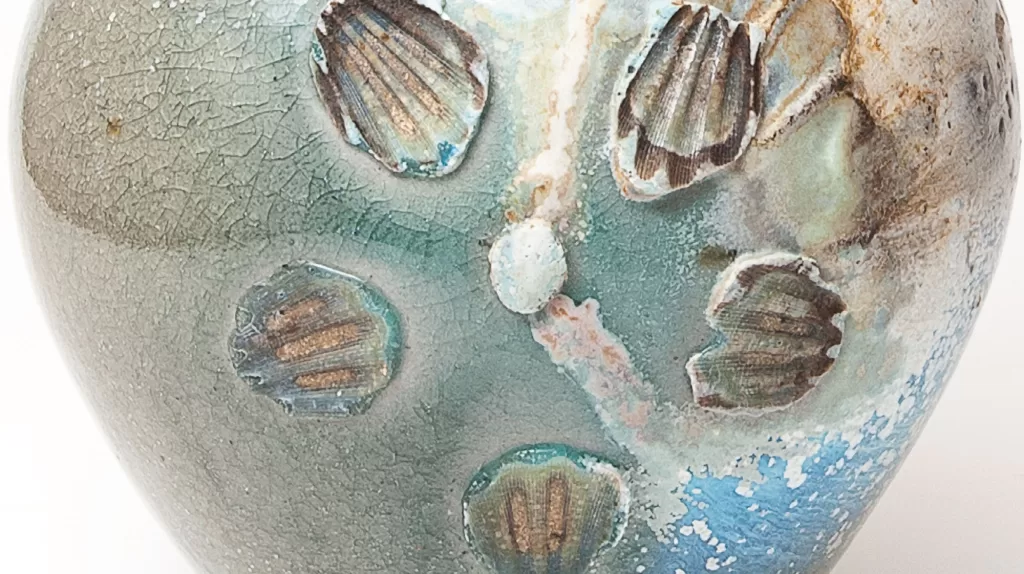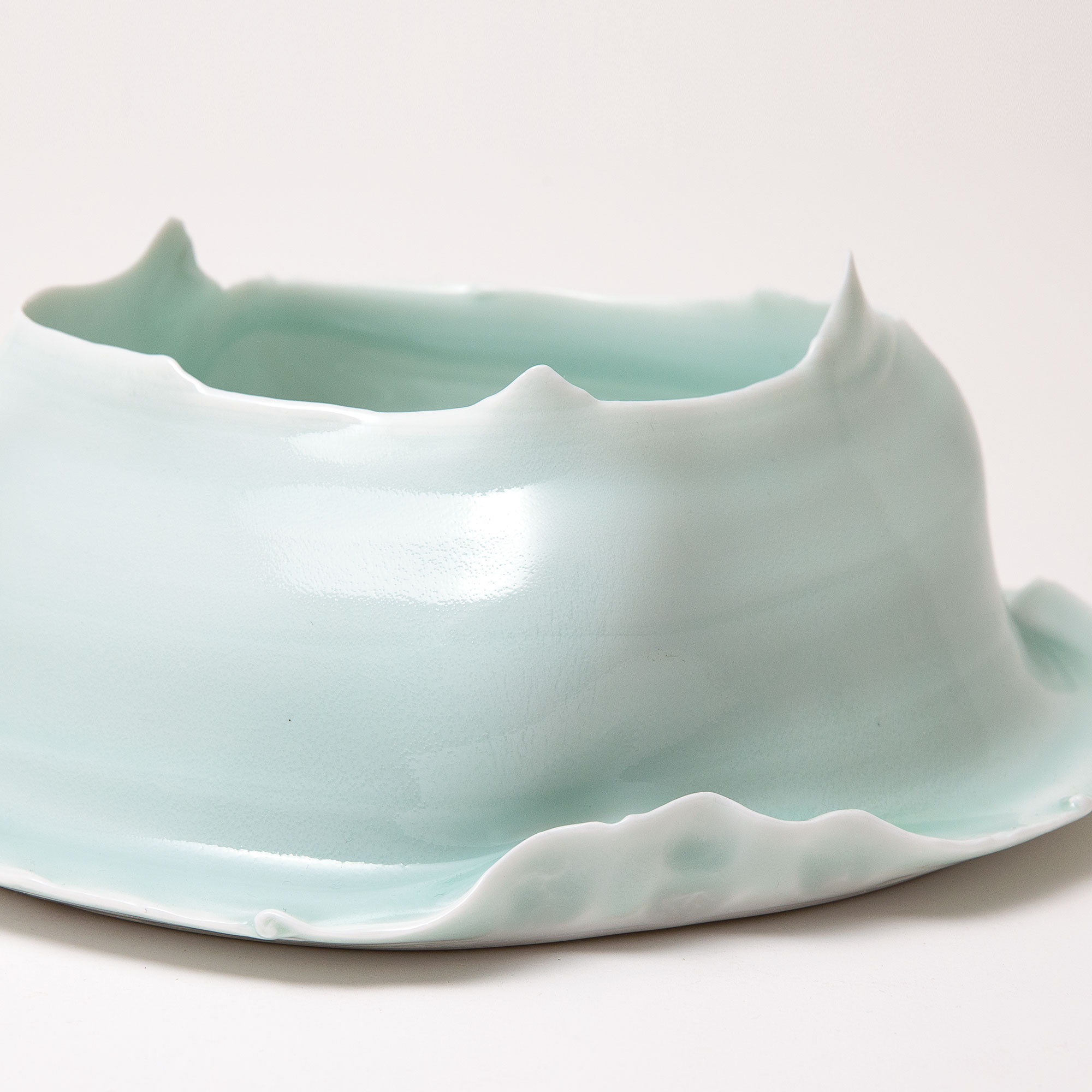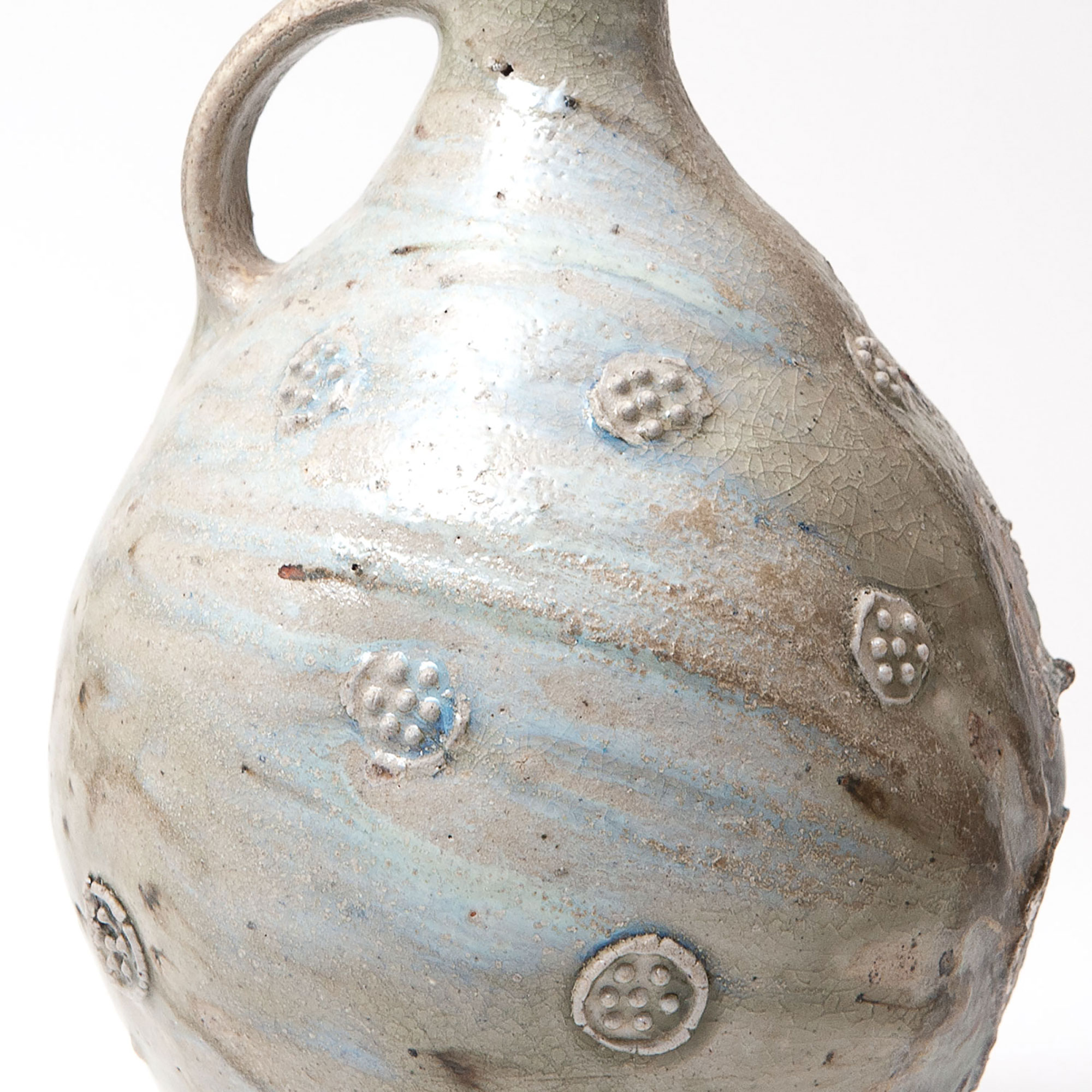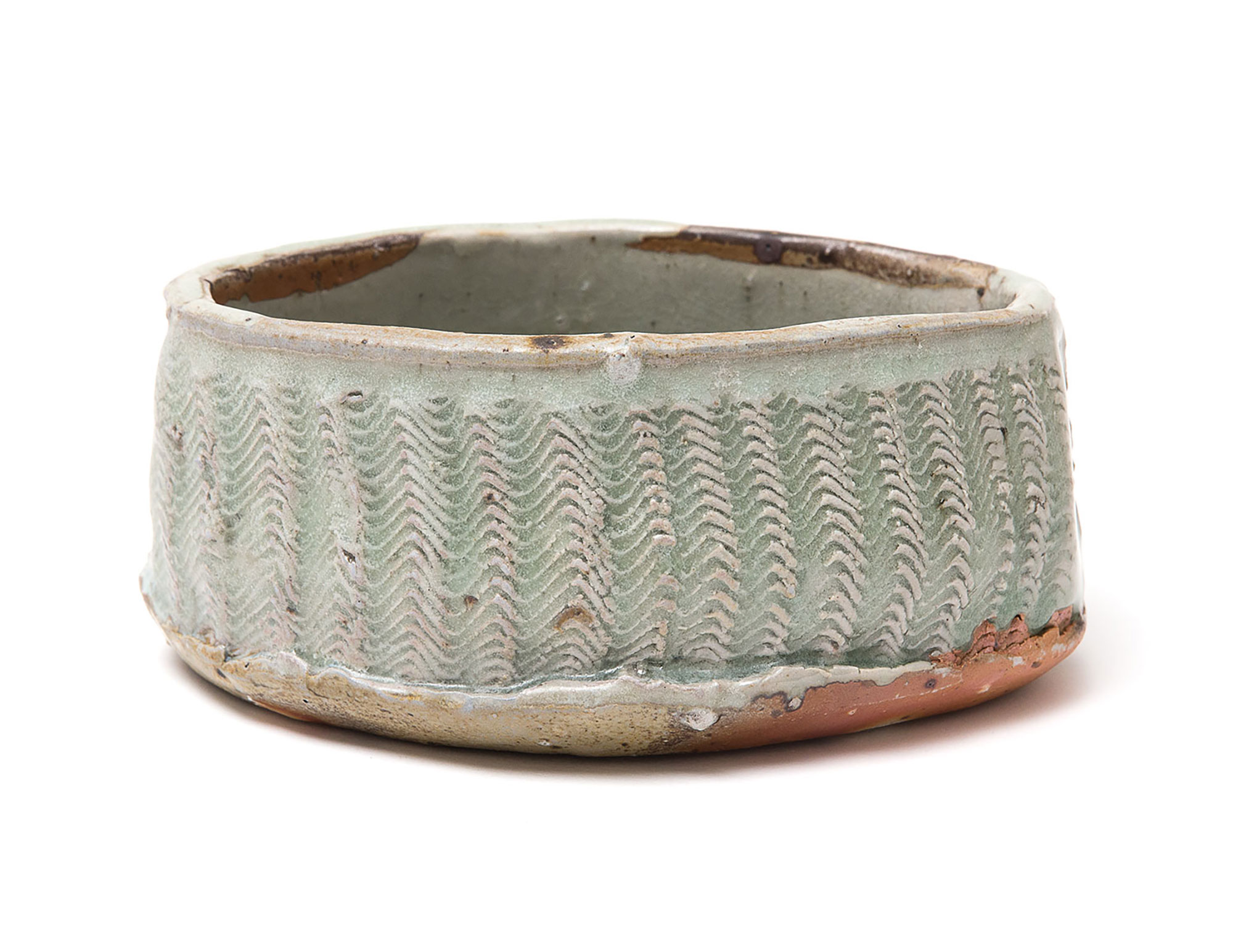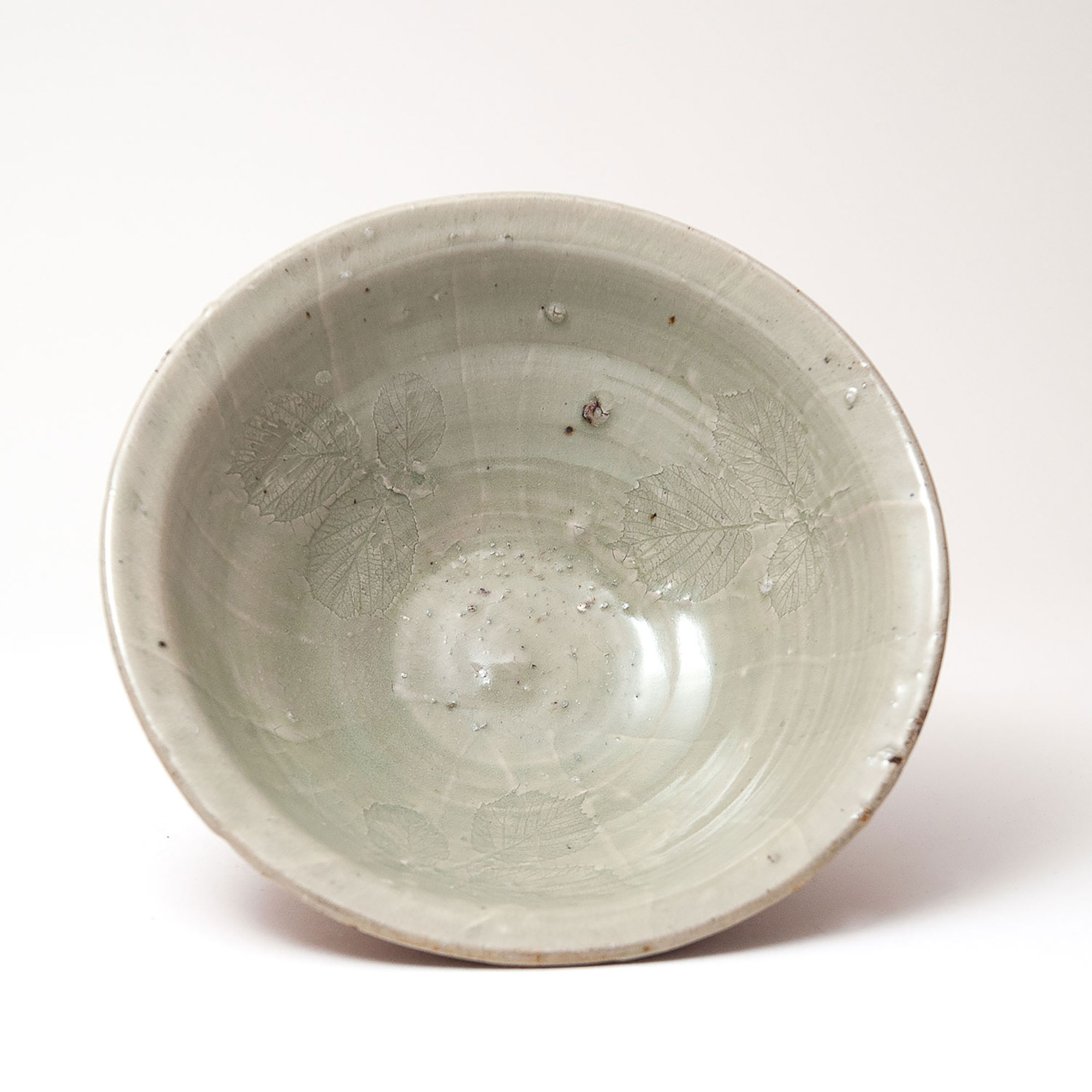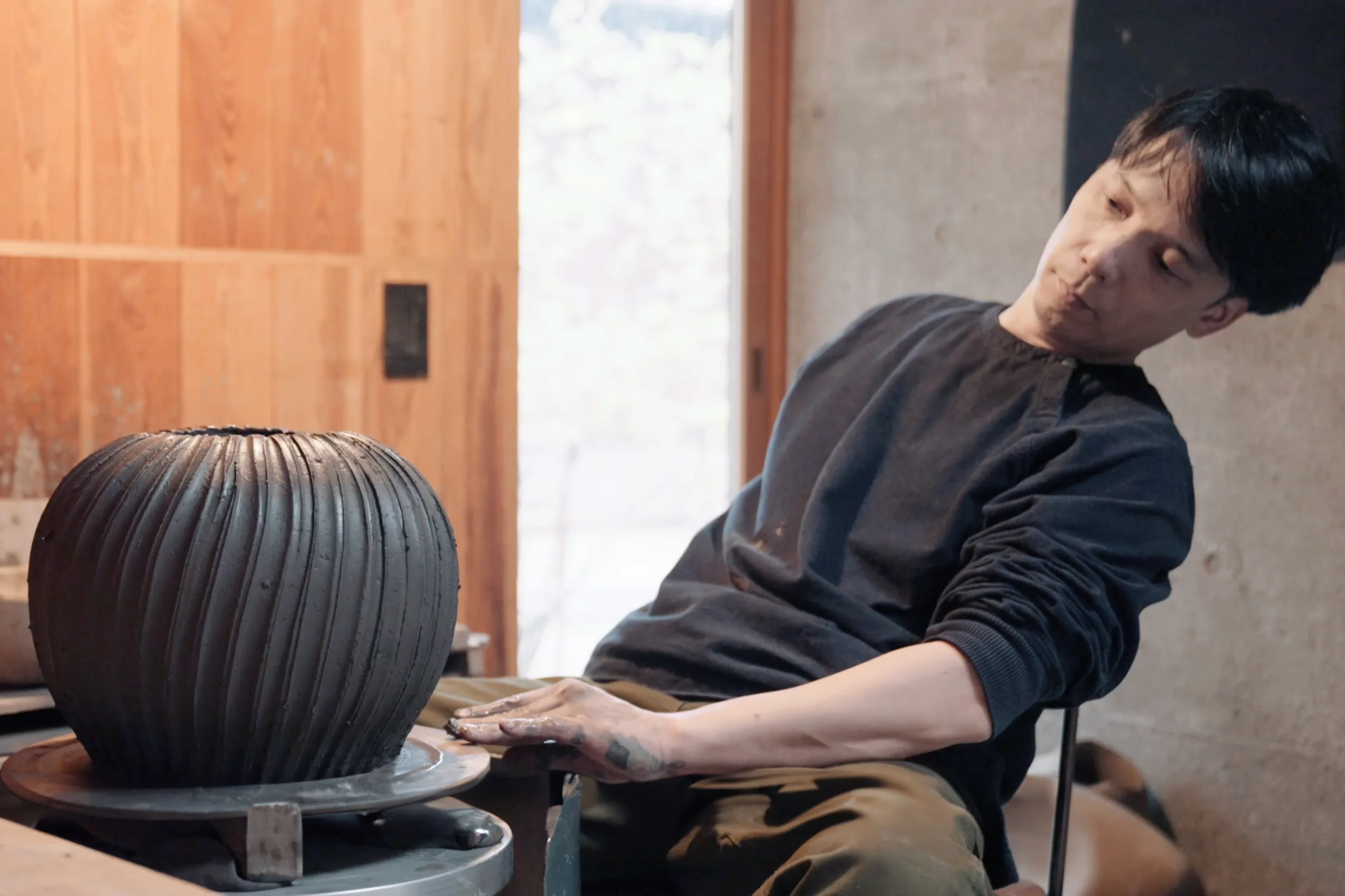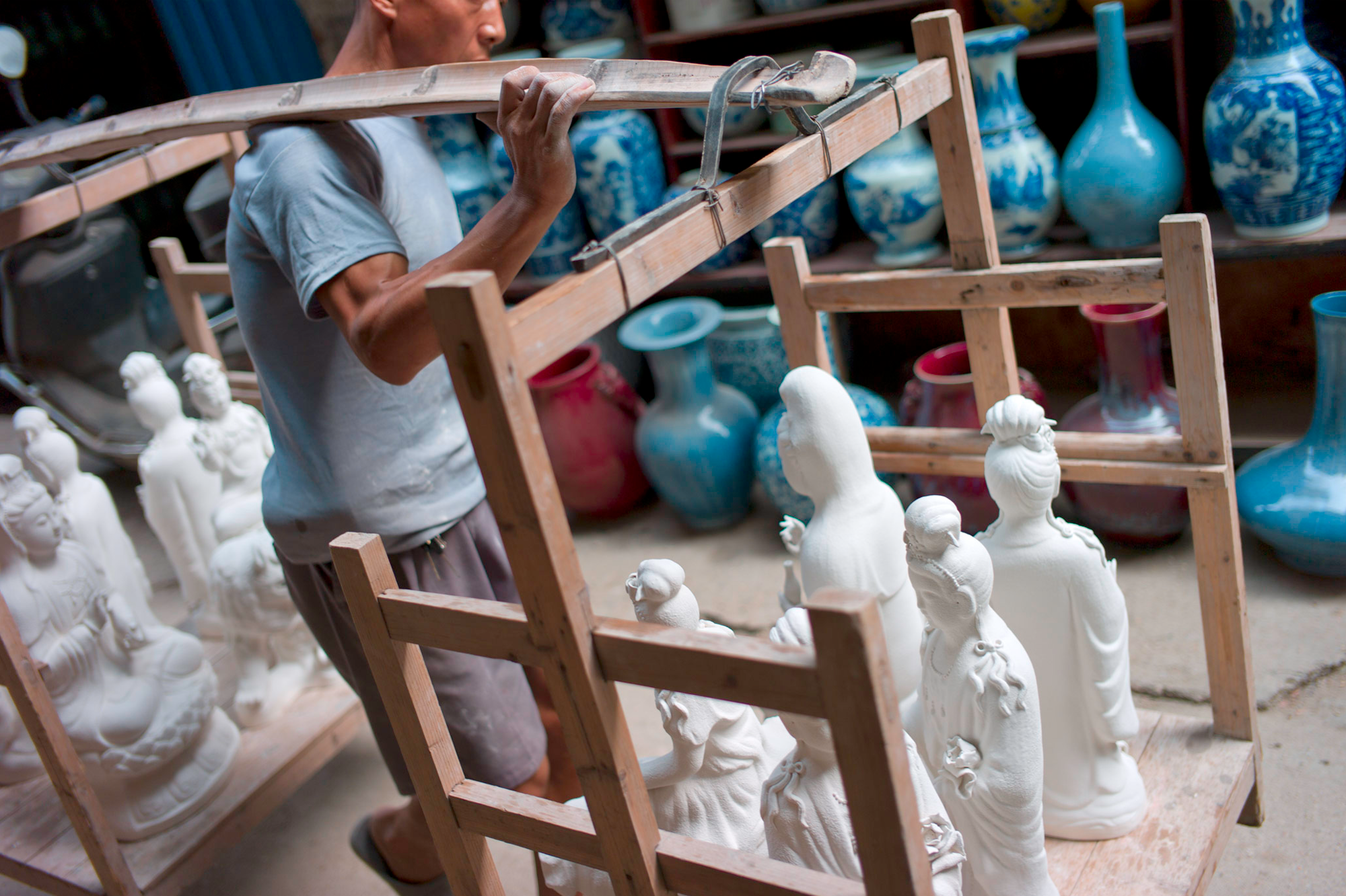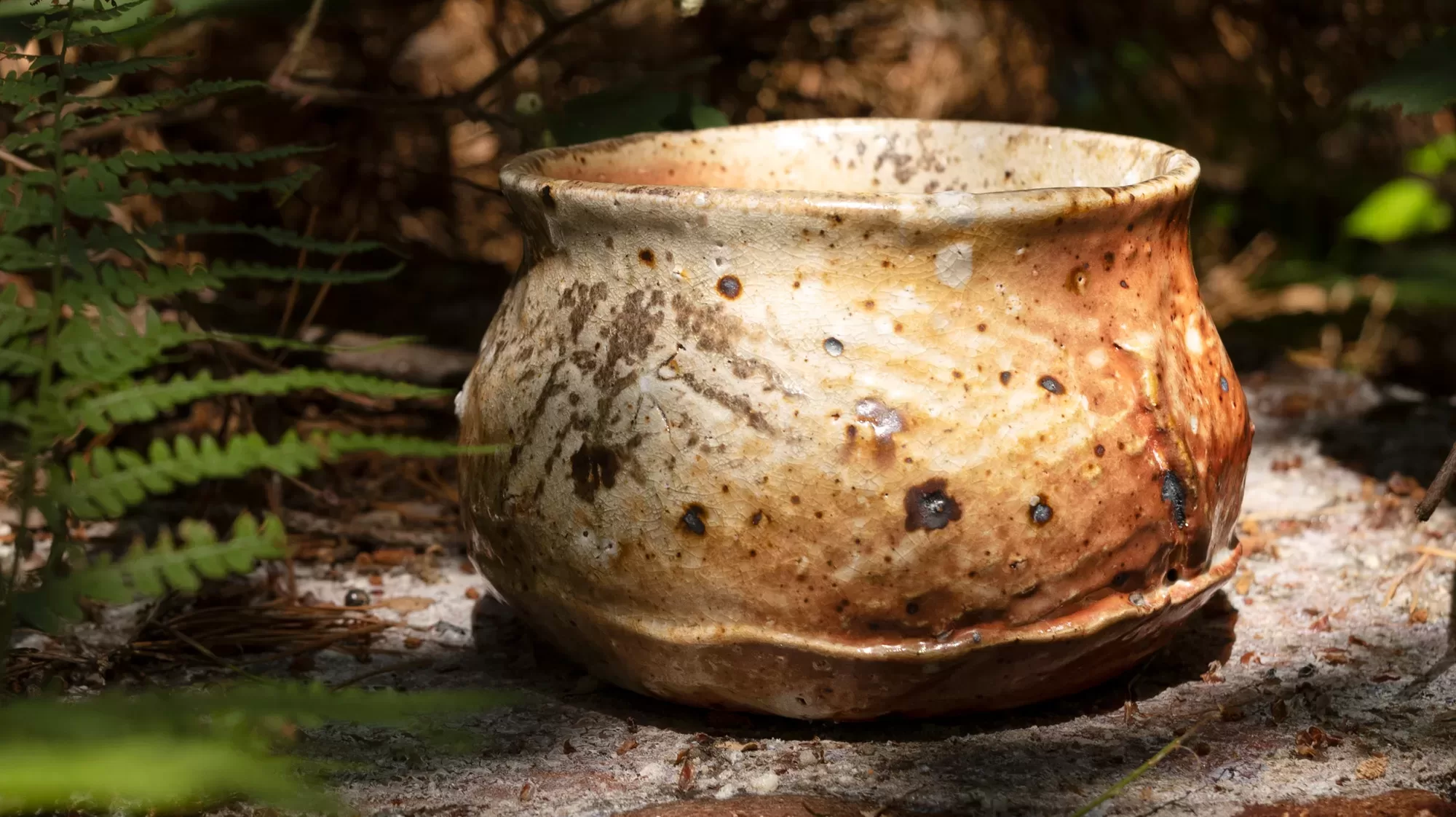What colour do you see, when you look at the heart of this celadon pot by Svend Bayer? Between the scallop shells, where the warm, yellow-grey glaze cools and illumes into this beautiful glassy pool. Do you see green, or do you see blue?
Celadon is a complicated colour word (are there any that are not?). It has been used to describe, loosely, both a type of ceramic ware, the glaze itself, and the elusive, abstract colour derived from it. In China, where celadon originates, the old term for this kind of pottery is ‘qingci’. The first character in the word, 靑 – ‘qing’ – splits into two ideograms, one on top of the other. The top half signifies the verdant growth of young plants, the bottom the red mineral dye cinnabar, which here stands in for ‘colour’. Over time, this bottom ideogram was simplified to that of the moon. Put it all together, and you have in a single word a whole spectrum stretching, as an old Chinese saying goes, between the blue of the sky and the green of the sea.
China was far from alone in developing a language of colour that recognised, but chose not to distinguish explicitly between blue and green. Most East Asian languages share this characteristic, as did many closer to home. Where the Chinese had ‘qing’, the Ancient Greeks had γλαυκος, from which we get our own ‘glaucous’, a term that is really no more prescriptive than celadon. Originally it expressed an aspect of light rather than colour; more shimmer off the surface, than tint or pigment. Homer’s sea, usually ‘wine-faced’, occasionally ‘gleamed’, as did Hesiod’s. Later, as Greek literature became more literal in its use of colour, it was used of eyes and olives, of the wax-white ‘bloom’ that appears on grapeskin and vine leaves, and of the slick, silver grey of fish scales.
Because it is not a pictogram, our western term ‘celadon’ falls short in capturing all this subtlety. Like glaucous, the colour it describes is one of a surface reflecting light. Celadon wares were prized by Chinese imperial courts for this very luminescence, which they thought resembled the auspicious gemstone jade, the moon, freshwater springs, ice, clouds, moss, lotus leaves, and weathered bronze – which gives an indication of celadon’s vast colour range, from the darkest of greys to the palest of blues. They were produced for well over a thousand years, adapted by the Koreans and the Japanese, and traded along the silk road, bringing the first celadons to Turkey around the end of the first millenium.
Among celadon’s most beautiful qualities is a fine craquelure in the glaze, breath-taking in the flesh. When Western hands were first laid on these pots, they assumed this ‘crazing’ in the glass surface was a defect, but for the Chinese it was every bit intended as decoration, and often named according to the extent of the craze: fish roe for the densest, cracked ice the most prominent.
Iron oxide was the deciding factor in their colour, as it is for so much in the realm of ceramics, with dark olive at the iron-rich end of the scale and cold, lunar blues at the other. One school of pottery exploited the extremes of this range with a white, almost translucent porcelain and a pale blue glaze. Known as ‘qingbai’ porcelain – there’s that word again – these were made in Jingdezhen. Great care was taken to refine the clay body, so that its duck-egg glaze could really sing. The wares were fired in a suffocating ‘reductive’ atmosphere, where the fire within is starved of oxygen by suffusing the kiln with smoke from pine wood fuel. This forces the flames to draw oxygen from the glaze’s oxides for sustenance, in turn producing this exquisite celadon colour. For all its technical complexity, qingbai, more often to be found on funereal urns than resplendent vases, was rarely afforded a place in the imperial court. The Japanese potter Takeshi Yasuda continues to make ethereal qingbai from Jingdezhen, its birthplace, and now the porcelain capital of the world.
History, tradition, and cultural custom were all lost on the European connoisseurs who first dealt in celadon. Instead, or so the most popular theory suggests, they named these pots after the character Céladon, a jilted lover in Honoré d’Urfé’s gargantuan 17th century novel L’Astrée. The setting is 5th century Forez, now the valley of the Loire, on the banks of the river Lignon. Céladon and Astrée, an amorous shepherd and shepherdess, are the two central characters in an expansive cast. At the beginning of the book, Astrée is deceived by a rival paramour that Céladon loves another, so she banishes him from her company. Decided on death, the rejected Céladon hurls himself into the river, but not before snatching a single ribbon from Astrée’s dress, attached to it a ring which becomes a symbol of his undying love.
The name was not novel to D’Urfé’s text. He had stolen it from Ovid’s Metamorphoses, which features two anonymous Celadons (both, coincidentally, killed in wedding brawls). In the original Greek, κέλαδος meant a clamorous sound, typically that of rushing water or a peal of birdsong; by the time D’Urfé was done with it, it had come to represent Delphic idylls, frivolous courtship, and the poetics of love unconsummated.
Céladon’s story was, quite literally, unending: an enormous, sprawling pastoral comedy of courtly wooing, that at more than 5000 pages still remained unfinished on D’Urfé’s death. It would become hugely successful, both in the original and adapted for the stage. Crucially, Céladon is described – fleetingly – as wearing clothes of pale green: and so, the story goes, when the first celadon wares made their way into continental palaces, they were struck by the similarity between this glaze and the sylvan dress of the lovelorn Céladon.
It seems absurd that so ephemeral a reference should have given its name to such a widely exported and valued ware. But like Céladon himself, who is rescued from the river by a band of nymphs and disguises himself as a woman to secretly return to Astrée’s court, it is a story which the colour will probably never shake.
Another, less romantic, theory behind the word suggests that we received it as a corruption of the name of the sultan Saladin. In 1171, after his successful capture of Cairo from the Shi’ite Fatimids, Saladin sent a great number of exquisite Chinese celadons to his mentor, Nur al-Din, as a show of thanks for his support in taking Egypt. Alas, they were not appreciated by the frugal Syrian, who returned the favour by sending a team of auditors to inspect Saladin’s coffers.
Reciprocity and gift-giving have always been a vital values in Islam, and Saladin was – if you’ll forgive the expression – a gifted giver, whether of land, tax-breaks, or treasured artefacts. Celadon, which was widely imported and copied in the Middle East, made for an especially popular present. Rumours of its mystical properties had travelled with it to the Islamic rulers, who believed it could betray the presence of poison by changing colour or shattering to the touch – a useful feature in an age of treachery and political intrigue. But most important of all, green, in all its many shades, is the colour of Islamic paradise. What better evocation of heaven than celadon, this colour of cloud and springs, of life, love, and death, between the blue of the sky and the green of the sea?

